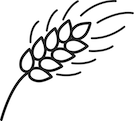Child Protective Services: A Guide for Caseworkers Part 2 (4 credit hours)
This is part 2 and covers Chapters 5-8.
Program Summary: This course provides guidance to those working for the safety and well-being of children. Part 2 examines the intake process, the initial assessment, the comprehensive family assessment, and the family plan. The course identifies potential signs of abuse and neglect and compares safety and risk. Protective factors, protective capacities, and risk factors are discussed. Part 2 covers the following chapters: Chapter 5 Reporting and Intake; Chapter 6 Initial Assessment or Investigation; Chapter 7 Comprehensive Family Assessment; and Chapter 8 Development of the Family Plan.
This course is recommended for social workers, counselors, and therapists and appropriate for beginning and intermediate levels of practice.
Publisher: The Children’s Bureau Office on Child Abuse and Neglect
Course Objectives: To enhance professional practice, values, skills, and knowledge by identifying key issues related to child protective services practice.
Learning Objectives: Describe signs of abuse and neglect. Identify motivational interview principles. Describe protective factors, protective capacities, and risk factors. Explain SMART goals.
Review our pre-reading study guide.
G.M. Rydberg-Cox, MSW, LSCSW is the Continuing Education Director at Free State Social Work and responsible for the development of this course. She received her Masters of Social Work in 1996 from the Jane Addams School of Social Work at the University of Illinois-Chicago and she has over 20 years of experience. She has lived and worked as a social worker in Chicago, Boston, and Kansas City. She has practiced for many years in the area of hospital/medical social work. The reading materials for this course were developed by another organization.





